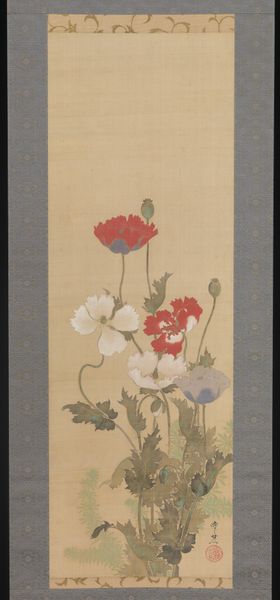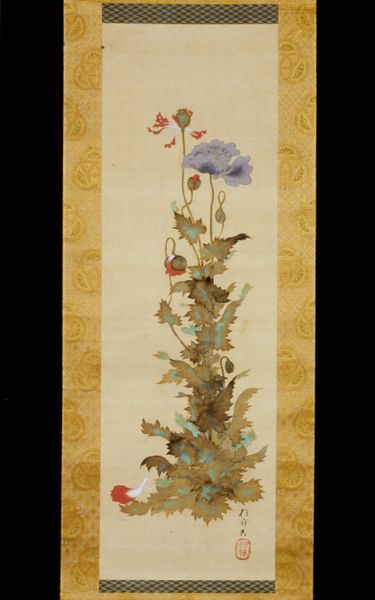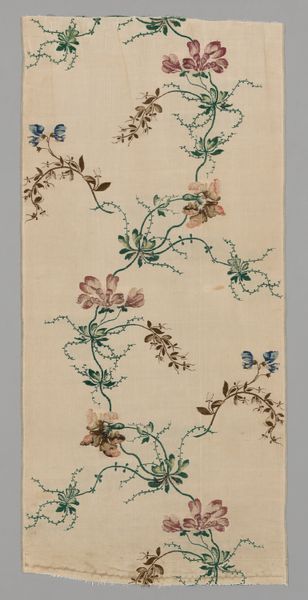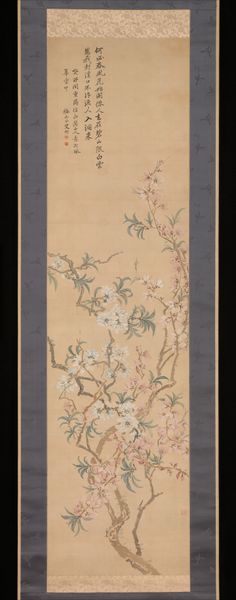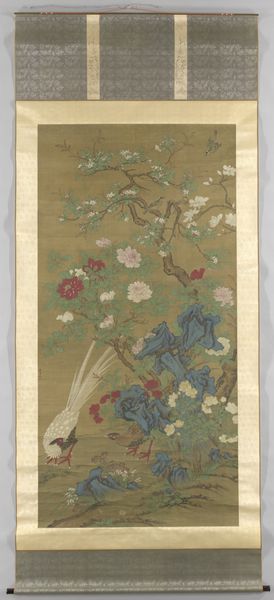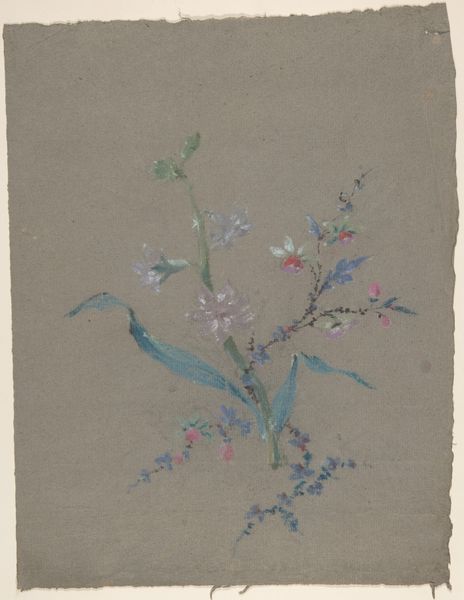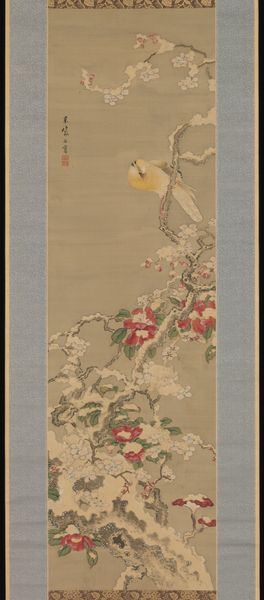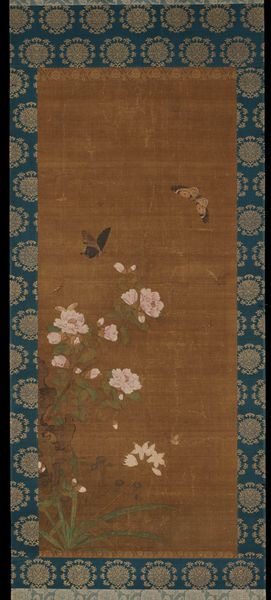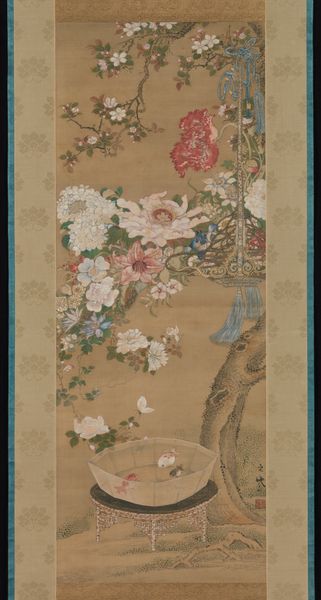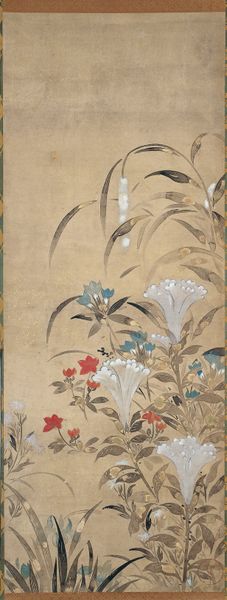
tempera, painting, watercolor
#
tempera
#
painting
#
asian-art
#
landscape
#
ukiyo-e
#
watercolor
#
orientalism
Dimensions: 43 5/16 x 16 1/4 in. (110 x 41.3 cm)
Copyright: Public Domain
Ogata Kōrin rendered these 'Hydrangeas' with ink and color on paper in the early 18th century. The lush blue and white flower heads dominate the composition, symbols of gratitude, understanding, and apology in Japanese culture, often tied to heartfelt emotions. But consider how these clustered blooms echo in other eras. In ancient Greece, similar floral arrangements signified abundance and fertility, adorning temples to Aphrodite. The subconscious draws these connections across time. It’s fascinating how Kōrin, likely unknowingly, taps into this primal, almost universal, language of flowers. In our own dreams, dense blossoms might mirror feelings of overwhelming emotion, a parallel to the hydrangea’s message. The hydrangea motif has reappeared throughout art history, each time subtly shifting, yet always retaining a powerful connection to feelings of deep emotion. This flower’s journey is far from linear; it spirals through time, accumulating layers of meaning.
Comments
No comments
Be the first to comment and join the conversation on the ultimate creative platform.
